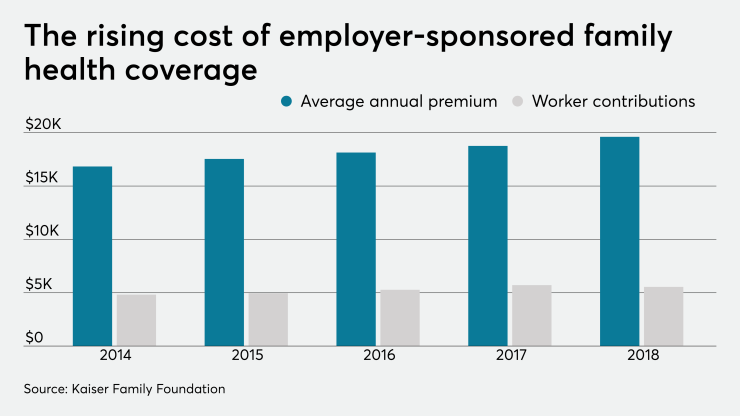Low-income employees are at a high risk for facing financial barriers to healthcare, which could mean higher costs and lost productivity for employers down the road.
Even when low-income workers — or those with annual family incomes of less than $35,000 — have employer-sponsored insurance, hurdles like high deductibles, coinsurance and drug prices can keep healthcare out of their reach, according to a new report from the Integrated Benefits Institute. The study found that one in three low-income employees needed healthcare they could not afford.
“A lot of employers are already learning the hard way that cost-sharing is a blunt instrument when it comes to helping employees become better healthcare consumers,” says Brian Gifford, research director at Integrated Benefits Institute and lead author on the study. “This report punctuates that lesson; when employees can’t afford the care they need, the risk is that serious issues will develop.”
See also:
The research, which examined nationally representative data collected by the Centers for Disease Control and Prevention between 2007 and 2017, focused on the link between healthcare and sick day absences. On average, low-income employees used 70% more sick days than their peers.
When employees with chronic conditions can’t get care — because of costs, scheduling or transportation issues — health problems can spiral out of control, Gifford says. One in three low-income workers experienced a financial obstacle to healthcare in the 12 months prior to the survey. More than half of uninsured employees experienced a cost-related barrier to care, compared with about one-fifth of insured employees.
“Then you have higher health spending when conditions get so bad that the employee needs to go to the ER, and a high risk of extended absences while they recover,” he says. “In that case, the employer loses the contributions of the employee, coworkers have to pick up the slack, and the employee loses some or all of their earnings. Everyone loses.”
See also:
There are several steps employers can do to support low-income workers. Cost-sharing strategies often work well if they are designed to complement an employer’s health plan, says Erin Peterson, research associate at Integrated Benefits Institute, and co-author of the study. Paid leave, disability insurance, flexible spending accounts, prescription coverage, well-being programs and support services can all help employees get better, more cost-effective healthcare.
“These can all play a role in helping ensure that access to care is integrated into a broader health and productivity strategy,” she says.






